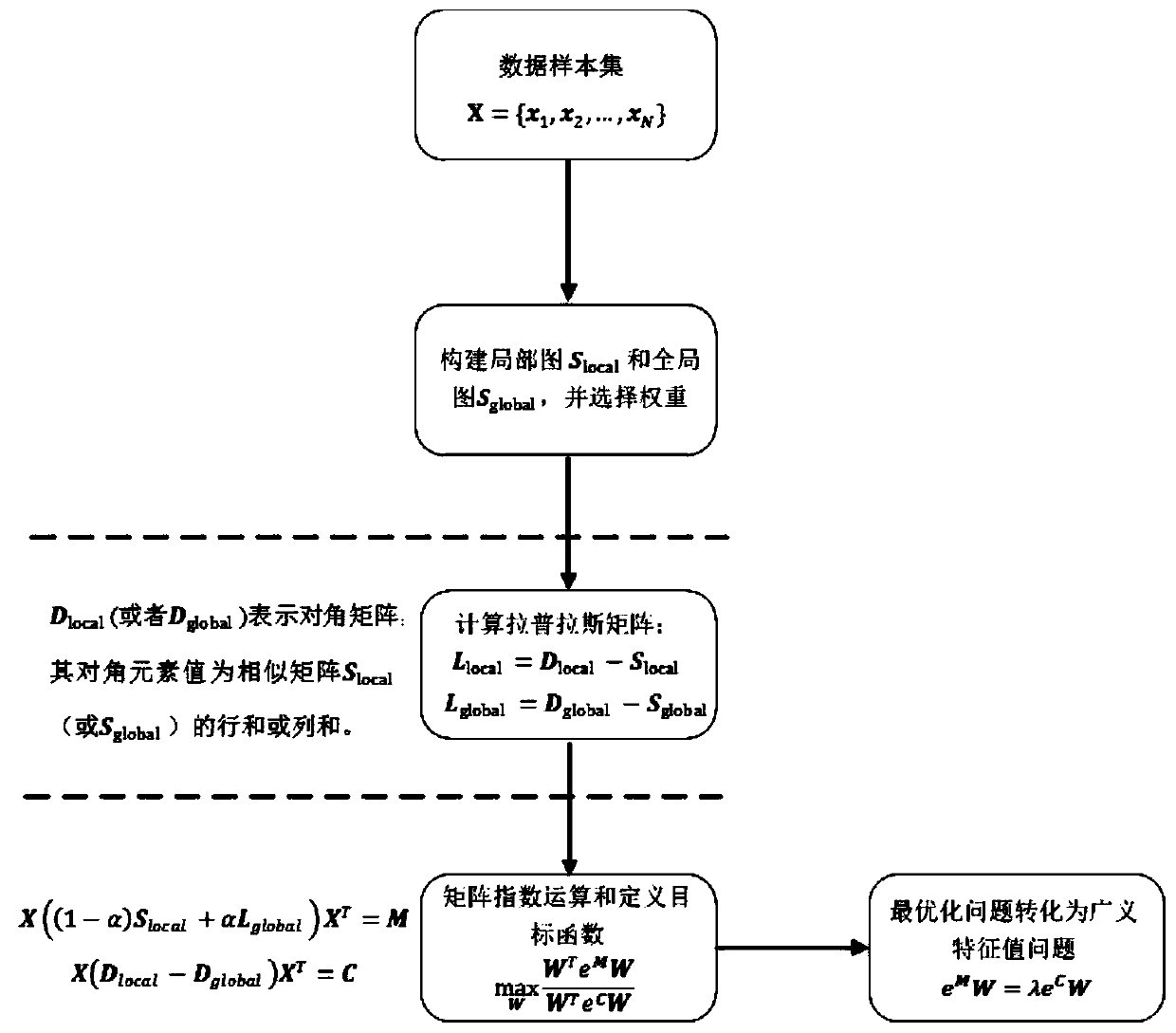Matrix index-based elasticity preserving projection method and application thereof
A matrix index and projection-preserving technology, which is applied to instruments, character and pattern recognition, computer components, etc., can solve the problems of sensitive neighborhood parameters and unconsidered data structure information, so as to improve robustness and reduce sensitivity Effect
- Summary
- Abstract
- Description
- Claims
- Application Information
AI Technical Summary
Problems solved by technology
Method used
Image
Examples
Embodiment Construction
[0017] The following description serves to disclose the present invention to enable those skilled in the art to carry out the present invention. The preferred embodiments described below are only examples, and those skilled in the art can devise other obvious variations.
[0018] For the face recognition problem, given a face image training sample set X={x 1 , x 2 ,...,x N}∈R D×N , x i Represents a D-dimensional feature vector drawn from a face image. For example, for a 100- to 100-pixel face image, it will be a D=10000-dimensional feature vector after expansion. N represents the number of training samples. The purpose of the present invention is to find a transformation matrix W∈R D×d , and use this transformation matrix to get the low-dimensional embedding of face data: y i =W T x i ,y i ∈R d×N , where d<D, thereby reducing the data dimensionality. Finally, the classification and recognition of face images can be realized in low-dimensional space.
[0019] The e...
PUM
 Login to View More
Login to View More Abstract
Description
Claims
Application Information
 Login to View More
Login to View More - R&D
- Intellectual Property
- Life Sciences
- Materials
- Tech Scout
- Unparalleled Data Quality
- Higher Quality Content
- 60% Fewer Hallucinations
Browse by: Latest US Patents, China's latest patents, Technical Efficacy Thesaurus, Application Domain, Technology Topic, Popular Technical Reports.
© 2025 PatSnap. All rights reserved.Legal|Privacy policy|Modern Slavery Act Transparency Statement|Sitemap|About US| Contact US: help@patsnap.com



